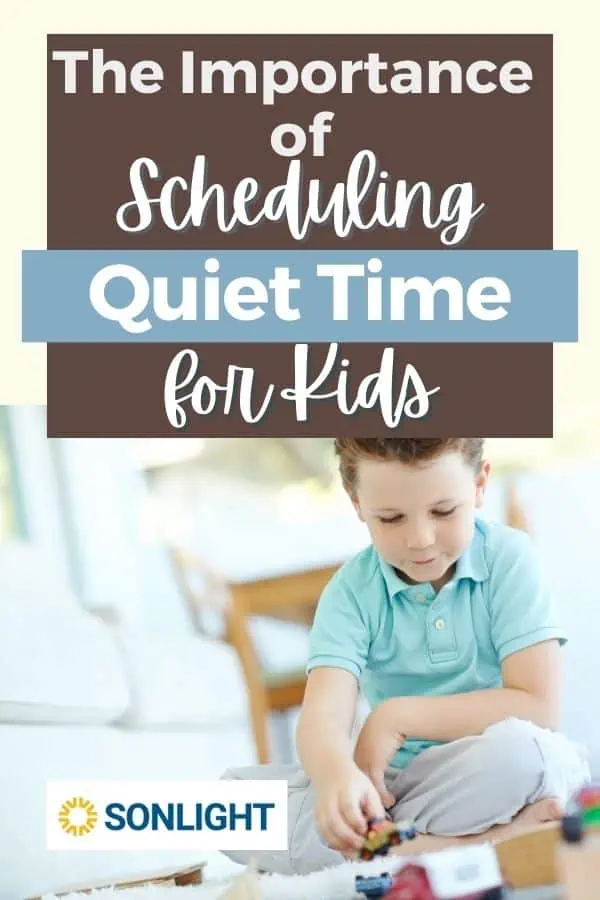The Best Tips for Homeschooling Multiple Grades & Levels
Published:
July 20, 2023

Contributor:
Sonlight
Disclosure: This post may contain affiliate links, meaning if you decide to make a purchase via my links, I may earn a commission at no additional cost to you. See my disclosure for more info.
One of the most-asked questions of new homeschool moms is how to be successful with homeschooling multiple grades. Veteran homeschool moms of kids in multiple grades and levels know there are tried and true strategies for keeping your sanity while still doing a great job. Here are the best tips that you need to know.
These strategies will make it possible to homeschool multiple grades with confidence, success, and peace. Homeschooling various levels doesn’t have to be chaotic! Even if you implement just a few of these ideas, you’ll see improvement in no time. Start small and add in more of these tips as you go.
Homeschooling Multiple Grades
The homeschool journey is so much work when you’re only homeschooling one child. But when you start homeschooling multiple grades of school-age children, the chaos can be overwhelming unless you have these tips. Once you have a great system in place that keeps everyone on-task and learning effectively, you’ll be able to really enjoy homeschooling children of different ages.
Establish a Routine
One of the best tips you’ll ever hear is to create a daily routine. Flexible homeschool routines keep you on track but allow for normal life interruptions, sick days, or days out with co-ops and activities. A great routine allows everyone to know what they should be working on at any point in the day. Mom shouldn’t have to micromanage each minute of the day. With a daily routine, she won’t have to!
Create a Homeschool Schedule
A homeschool schedule is another important piece of an organized and successful homeschool. Some younger children thrive with a visual schedule on a chart or a physical workbox system. Your high schooler might do well with a written schedule in a planner or they may gravitate toward an online calendar.
However you decide to do it, make sure everyone has an age-appropriate way to keep track of obligations, weekly tasks, and days out for activities or lessons.
Block-Scheduling
One way to schedule out your school year with sufficient time for different subjects, group activities and family time is to use block-scheduling. That means you may cover fewer subjects each day but for longer periods of time. So rather than feel overwhelmed with trying to fit in six subjects each day, you can schedule in blocks.
One of the best things about block-scheduling in your homeschool is that you can take the full morning for your history read-aloud along with a hands-on project or other deep dive into the content and not feel rushed. It can give your family the flexibility to linger in the books and content that you love.
Here’s a simple example of how block-scheduling could look in your homeschool:
- Monday, Wednesday – math, language arts, and history
- Tuesday, Thursday – math, language arts, and science
- Friday – art, co-op, lessons, field trips
Schedule One-on-One Time Into Your Day
Homeschool moms with younger students know that they will need your full attention at some point in the day. This is especially important when you’re teaching new concepts. So as you’re working out the best system for homeschooling multiple grades, make sure to schedule in one-on-one time into your day for each of your kids.
Your high schoolers may only need a quick check in daily or a more extended weekly check in to stay on track. But for your younger children, this individual attention is crucial to keep everyone focused and progressing.
Keep Lessons Short
Another key tip for successfully homeschooling multiple grades is to keep the lessons short! Younger children especially benefit from short lessons because they really don’t have the attention span of their teenage siblings. Kids are more likely to retain what they’re learning when the lessons are short and sweet.
Morning Time Activites
Veteran homeschool moms will tell you that one of the most helpful strategies for homeschooling multiple grades is gathering the whole family together for morning time activities. The activities you choose to do together will largely depend on the ages of your kids.
Younger children can do things like calendar time and memory work. Older kids will still love participating in family read-alouds and memory work. A morning basket will help to keep you organized and provides a consistent spot to find the materials you need for your morning time activities.
Teach Subjects in Groups
Whenever you can, teach subjects in groups when you have multiple grade levels. Group work takes much less time from you as the homeschool mom to facilitate and many ages can learn the same content. Most elementary-aged kids can learn history, science, music appreciation, art, Bible, and foreign language together. Older kids can do the same.
Read Alouds for Family-Style Teaching
Anchoring your family-style teaching around great literature is the perfect way to homeschool a large family. Use family read alouds during your morning time or as the foundation of your history and science studies.
Older Siblings Help Teach Younger Siblings
Older children can help teach their younger siblings and this can be a huge benefit for homeschool moms of large families. Older kids can read to younger kids or help them with review games or learning activities.
Independent Work for Older Students
One key way to keep your sanity as a homeschool mom of many ages is to help your older students to be able to complete independent work for at least part of the homeschool day. Middle school students into high school students can certainly be responsible for independent learning.
You may want to use an online course to keep their learning structured and give some accountability. Other teens do well with textbooks and assignments on their own.
Keep Young Children Engaged with Learning Activities
Younger kids don’t necessarily need as much focused academic time as older siblings. So you may want to organize and invest in additional learning activities and open ended toys that can keep your youngest child engaged while you work with the other kids.
Hands-on learning activities can be a great extension of what they’re learning in your homeschool.
Use a Family-Style Curriculum
Teaching multiple grades and different levels is much easier done when you can find a family style homeschool curriculum. The best homeschool curriculum will help you focus on individual progress through skills lessons and group progress through content lessons.
Here’s what that might look like.
- Everyone listens to the history read-aloud
- younger kids work on projects or activities based on the content
- older kids have additional research to do based on the history topic
When you can use a multi-age curriculum, you will find that it’s much easier to homeschool multiple different grade levels.
Couch Subjects
A great way to teach multiple children together is to capitalize on Couch Subjects.
What is a Couch Subject? This would include subjects that are content-based. That means that all ages and grade levels can learn the same content.
Social studies, science, Bible, and music appreciation can make great subjects to do together as a family. And the reason they are named Couch Subjects is that you can do them together of course on the couch! Pull up a pillow, get cozy, and enjoy the family learning.
Table Subjects
Table Subjects, on the other hand, are those subjects that are more skill based. Those would be at least math and language arts, where each child does need an individual lesson at their own level. Many families choose to do these individual subjects at the kitchen table, hence the name Table Subjects.
Incorporate Unit Studies
The best way for homeschooling multiple grades is to incorporate unit studies into your plan. A unit study is simply an organized study of one topic, but it may cover multiple disciplines. So, for example, if you are doing a unit study on Laura Ingalls Wilder, you could cover multiple topics, such as:
- literature – read Little House on the Prairie
- history – create a timeline for Laura’s family alongside the major events in U.S. history
- geography – map out her family’s travels
- culinary arts – make a meal that Laura’s family would have eaten
- art – learn how to stitch like Ma Ingalls
- music – sing some songs that Pa would have played on his fiddle
Add Hands-on Activities
Consider adding hands-on activities into your homeschool plan to help with keeping up with multiple ages. Field trips make a great addition to a large family homeschool plan. You can also include some reading extension activities to go along with your morning time family read-aloud.
Spend Time in Nature
Nature study makes the perfect activity to work into your week. All ages can keep a nature journal for kids where they record and sketch what they find on your nature walks. Older teens can bring in some of what they’re learning in botany or biology.
Younger kids may have more simplistic entries. But with a nature journal, all your kids can work at their own level while you enjoy spending time in nature as a family.
Teach Students how to Work Independently
Homeschool families with many age groups under one roof can ease the chaos by teaching kids how to complete their school work independently. Of course, younger kids will rely on mom for much of their guidance through the day. But as kids get older, they can take more and more responsibility for their own learning and begin to work independently.
Minimize Distractions
It can make a huge difference in a large family if you can find ways to minimize distractions in the home! Whether kids need to be off in their own spaces or you actually need to gather everyone at the kitchen table for some additional oversight, figure out what works best for your kids.
Some children really do need peace and quiet in their surroundings to be able to do their best work. Other kids may enjoy listening to music while they work. Make those adjustments so that everyone has the best chance at success.
Stagger Breaks
Consider adding in breaks or quiet time to your daily homeschool routine. Of course, if you have young children, nap time is an essential part of the day. But even your older kids can benefit from having staggered breaks throughout the day. This will also allow you to focus on one-on-one time with certain children while others take a break.
Final Thoughts
While it can be challenging, homeschooling multiple grades is definitely doable if you can implement these tried-and-true tips and strategies! Finding the right curriculum that will aid your family in this endeavor might be the most important first step.








